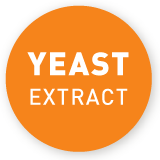More than 100 participants from science, the food and the retail industry got together on the 5th May to discuss the content, function and the taste of glutamate in food on the occasion of the symposium: “Glutamate – really just a question of taste?” at the Munster University of Applied Sciences. All speakers emphasized that glutamate was a natural component of many foodstuffs. There was no prove that the natural component posed a hazard to health, they said. However, Prof. Dr. Carola Strassner pointed out, the perception of yeast extract had been affected negatively by a very emotional public debate on transparency and labeling. Consequently, factual information was no longer considered. The conference was organised by the Faculty of Nutritional Sciences and Facility Management at the Munster University of Applied Sciences with Prof. Dr. Carola Strassner and Prof. Dr. Ursula Bordewick-Dell.
Glutamate – natural component of foodstuffs
Many foodstuffs naturally contain glutamate – this was confirmed once again by students’ research results which were presented at the conference in Munster. As part of their project work, the students had analysed the content of glutamate in fresh foods such as peas, potatoes, beef as well as processed foods such as instant soups, bouillons and frozen meals. The results show that all unprocessed foods that were analysed contained natural glutamate: According to the calculations, one portion of home made beef goulash with potatoes and peas contains around 430 milligrams of glutamate. Furthermore, the glutamate content of processed foods strongly depends on the composition and quality of the ingredients used. The degree of ripeness in the case of tomatoes and cheese and the meat content influence the glutamate level. The investigations showed that when the flavour enhancer monosodium glutamate was used, the glutamate content was higher than in comparative products with yeast extract or without any additives. When adding the ingredient yeast extract with its natural glutamate, the glutamate content of the tested convenience food was low.
Yeast extract – its natural amino acid profile creates that special taste
Yeast extract was often mentioned in connection with glutamate during the recent public discussions on labelling and transparency. Participants at the conference used this opportunity to share their knowledge on the production of yeast extract and particularly its special composition. Yeast extract is produced from yeast and consists of proteins, amino acids, carbohydrates, vitamins (in particular vitamin B) and minerals. One of the unique features of yeast extract is its profile of the 20 amino acids, including glutamic acid. This also distinguishes it from monosodium glutamate. These amino acids give yeast extract its characteristic taste. Its taste is very close to that of meat broth, as the amino acid profile of yeast extracts is very similar to that of meat broth even though yeast extract is free from animal components. “Thanks to its natural composition, yeast extract creates a special taste experience that appeals to both the mouth and the nose”, said Yolanda Werner from the European Association for Speciality Yeast Products (EURASYP). “Due to this special amino acid profile and the intensity of flavour that results, only ‘yeast extract’ and sometimes as ‘natural flavouring’.
Further information on EURASYP:
EURASYP is an acronym for European Association for Specialty Yeast Products. The members of the association are European manufacturers of specialty yeast products. EURASYP is the central contact for politics, science, media, commerce and the food industry, answering any questions related to specialty yeast products. Members of EURASYP include Bio Springer, DSM, Kerry, Lallemand, Leiber, Ohly and Sensient.
Additional Information



